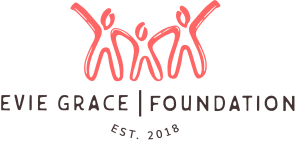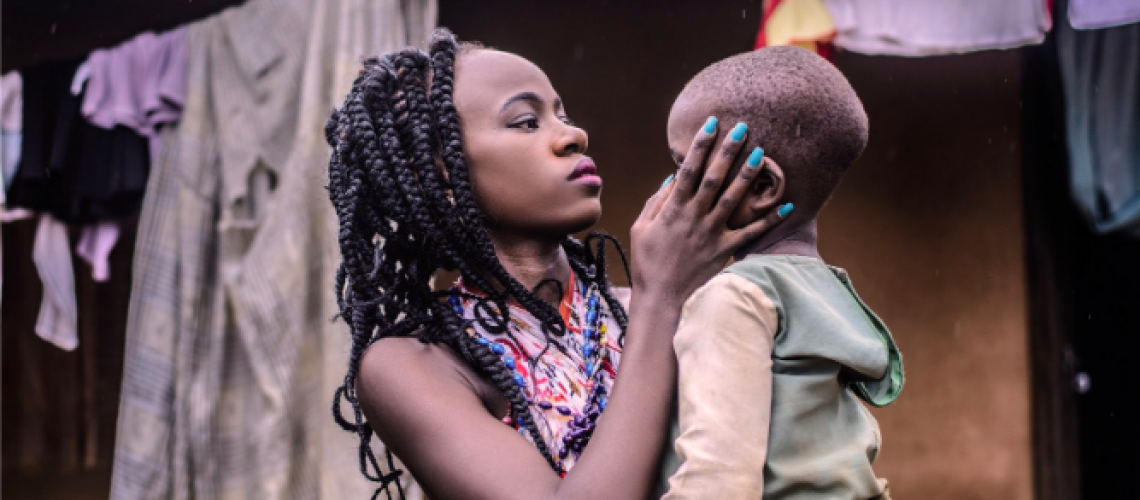Child marriage is a globally contested practice that violates fundamental human rights. By eliminating the practice, it will unlock and significantly contribute towards positive progress for the 2030 Sustainable Development Goals.
Child marriage refers to the union of any person below the age of 18 years (Gaffney-Rhys 2011). It is not gender-selective, but girl child marriages are significantly more prevalent. According to UNICEF (2020), out of those alive today, 115 million boys and men were married before 18 years in comparison to 650 million girls and women. The sheer scale of child marriages is difficult to comprehend, but the drastic gender difference is more striking, demonstrating that it disproportionately affects girls (Koski, Clark & Nandi 2017). Child marriage is a global issue, but the sub-Saharan Africa region has the highest prevalence, with 37% of the global rate. Niger has the highest child marriage prevalence globally, with a staggering 76% of its population married before the age of 18 (UNICEF Data 2020). This article will outline the multifaceted nature of child marriage, how it violates basic human rights, and why ending this practice is the key to making substantial progress towards the Sustainable Development Goals.
There are many complex factors that intersect and increase the likelihood of child marriage. Petroni (2017) explains the core of the custom is ‘rooted inequitable gender norms that prioritise women’s roles as wives, mothers, and household caretakers, resulting in inadequate investments by families in girls’ education’ (pp.781). The subordination and de-prioritisation of women within society is the cornerstone of this practice.
Poverty and child marriage are intrinsically linked. Living within a culture dictated by gender norms, impoverished families often choose to use their limited resources for their sons over their daughters (Walker 2012). Girls are perceived as an economic burden on poverty-stricken families, and early marriage provides respite because financial responsibility is now transferred to her husband’s family. Besides, the family may be “better-off” because ‘economic gains such as bride price (dowry) provide them with an incentive to marry their daughters early’ (Svanemyr et al. 2012, pp.2). The enticing economic opportunity to alleviate the effects of poverty sustains this practice.
Moreover, prevailing cultural beliefs impact child marriage. Some parents believe that early marriage protects their daughter from premarital intercourse and pregnancy (Svanemyr et al. 2012). In doing so, the family’s honour is preserved. Another explanation as to why parents may marry off their daughters young is articulated in the documentary, Bride trade: Fighting Tanzania’s child bride tradition (2017). The documentary features a father who reasoned that ‘if a girl marries early, she adapts more easily to her new family’ (RT Documentary 2017). The father felt justified removing his daughter from schooling to marry her early so she could easily adapt to her new role – although many scholars and professionals agree that education should be valued and is a powerful strategy to eliminate child marriage.
Child marriage is a disputed tradition because of its fundamental human rights violations. There are many instruments used to protect universal human rights, especially those of children, but they have not clearly defined that child marriage involves a person under the age of 18. The Convention on the Elimination of All Forms of Discrimination against Women (CEDAW) states in article 16 that child marriage has no legal effect (Gaffney-Rhys 2011). CEDAW is an improvement on other international agreements, but it does not explicitly define a child, so there is an ambiguity to which marriages are permitted (Gaffney-Rhys 2011). In fact, the instruments enacted by the African Union, such as the African Charter on the Rights and Welfare of the Child (1990) and the Protocol to the African Charter on Human and People’s Rights, are the most explicit. Both charters explicitly indicate that the minimum marriage age is 18, and they have required states to establish laws stipulating this, so there is no room for legislative ambiguity (Gaffney-Rhys 2011).
Child marriage is condemned for its human rights violations due to the harm it causes girls physically, psychologically, and socially. Girls are removed from their education when they marry young to take on domestic gender roles. The interrupted education socially isolates them and compromises future career opportunities (UNICEF Data 2020). Early marriage increases the likelihood of adolescent pregnancy. There are serious complications accompanied with pregnancy at a young age, and ‘girls aged between ten and fourteen are five times more likely to die in pregnancy or childbirth than women aged between 20 and 24’ (Gaffney-Rhys 2011, pp.361). Obstetric fistula is the most common medical problem for these girls and is a result of their underdeveloped bodies undergoing the trauma of pregnancy and childbirth. However, this preventable condition is avoidable through access to adequate natal education and medical care (Gaffney-Rhys 2011).
Given their young age and lack of education, young brides have little agency inside their marriage, especially regarding the use of contraception during intercourse. Therefore, the risk of contracting HIV is greater because most husbands are substantially older and have had more sexual partners (Gaffney-Rhys 2011). Child brides are also more likely to experience violence and sexual harassment than those who marry later (Petroni 2017). Free and full consent to marriage, specified in the Universal Declaration of Human Rights, is not provided to a child bride, and for these reasons, child marriage breaches human rights and must be addressed.
Academics and professionals concur that access to education is a valuable strategy to address and prevent child marriage. McCleary-Sills (2015) outlined that:
“Across 18 of the 20 countries with the highest prevalence of child marriage, girls with no education were up to six times more likely to marry are than girls with a secondary education.” (McCleary-Sills 2015, pp.71).
McCleary-Sills’ statistical evidence highlights the need for accessible education to tackle child marriage. Walker (2012) reported findings that indicate “the longer a girl child is exposed to education, it significantly reduces the chances of her being married off”. Walker’s (2012) report complements the perception of the Tanzanian father, mentioned prior, who asserted that ‘educated girls aren’t valued as highly’ (RT Documentary 2017). In rural Tanzania, an educated girl deters potential spouses and prevents early marriage. Svanemyr (2012) supports the notion that keeping girls in school can be an effective preventative strategy. Koski, Clark, and Nandi (2017) highlighted that providing incentives for girls’ education, like reducing education costs or offering free education, proved to effectively offset child marriage because it increases accessibility. Walker (2012) and Wodon (2016) also endorse reducing the cost of education because it relieves the economic burden from impoverished families and shows the most promise of prevention. By improving the accessibility of education, more families will be encouraged to keep their daughters in school and effectively lower the prevalence of child marriage.
The practice of child marriage undermines the world’s ability to successfully achieve the 2030 Sustainable Development Agenda and its 17 goals. It violates human rights, and the extensive harm that is experienced by child brides is impermissible. Instead of fixating on it as an unacceptable practice, we need to concentrate on the global benefits of ending child marriage and the success that will be unlocked for many Sustainable Development Goals. These benefits are outlined below.
Goal 1: No Poverty
Child marriage prolongs the cycle of poverty because a girl’s education is interrupted, which limits her employment opportunities. By accessing the opportunities that education provides, girls can envision their fruitful future (Girls Not Brides 2017).
Goal 2: Zero Hunger
Child marriage perpetuates food insecurity and malnutrition as babies of young mothers are ’15 times more likely to die before their 5th birthday, suffer from malnutrition and experience stunting’ (Girls Not Brides 2017). The end to child marriage will help to eradicate the cycle of food insecurity and malnutrition.
Goal 3: Good Health and Well-Being
Child marriage harms a girl physically, psychologically, and socially, and pregnancy is the greatest cause of death in adolescent girls worldwide. Ending this practice will improve the health of girls and their children (Girls Not Brides 2017).
Goal 4: Quality Education
Adolescent marriage commonly ends girls’ formal education. By eliminating child marriage, they will stay in school longer.
Goal 5: Gender Equality
Child marriage disproportionately affects girls due to inequitable gender norms. Opportunities for education, employment and community involvement are diminished by it. Stopping adolescent marriage means girls can better access the same opportunities as boys (Girls Not Brides 2017).
Goal 8: Economic Growth
Girls become socially isolated when married young and do not have the skills to gain employment. Intergenerational poverty will be broken by ending child marriage, and it will unlock economic opportunities for girls (Girls Not Brides 2017).
Goal 10: Reduced Inequalities
Child marriage is rooted in global gender inequality. Child brides suffer from violence, a lack of education, health, economic opportunities, and until it ends, gender equality will never be achieved (Girls Not Brides 2017).
Goal 16: Peace, Justice, and Strong Institutions
Strengthening legislation, such as birth and marriage registration systems, will help to monitor and stop child marriages (Girls Not Brides 2017).
Child marriage contravenes universal human rights, and the implications on girls’ overall well-being outweigh any justification for the practice. It needs to be addressed because it undermines the world’s prospects of achieving the 2030 Sustainable Development Agenda. McCleary Sills (2015) aptly articulates that if ‘child marriage continues unchecked, we will not reach global development goals’ (pp.77). As outlined, the elimination of child marriage is the key to unlocking Sustainable Development Goals.
At the Evie Grace Foundation, our mission is to offer long-term, life-changing solutions for the children that we support. To further this goal, we plan to establish a Therapeutic Transitional Centre for Street Girls in Malawi in 2021. In Malawi, some 42% of girls are married while still children, and 29% of girls aged 15-19 have already begun childbearing. Our vision is to create a safe and loving home for the vulnerable girls that we support with all the critical resources they need to thrive, including food, clothing, shelter, education, medical attention, psychological care, and love.
In addition, we believe that education is the key to change. To mitigate the exposure of our girls to exploitation and to prepare them for reintegration into society, in addition to their regular schooling, we will provide them with comprehensive human rights and sexual health education. These lessons will include not only information about how to prevent unintended pregnancies and sexually transmitted infections but also education about gender equality, human rights, and the value of delaying marriage until adulthood.
All of our guidelines and protocols are guided by the Convention on the Rights of the Child (CRC) and the Convention on the Elimination of all Forms of Discrimination against Women (CEDAW). They are also in line with the Malawi Growth and Development Strategy through the United Nations Development Assistance Framework (UNDAF) and contribute to sustainable economic development and food security; social protection and disaster reduction and management; access to equitable basic social services; HIV and AIDS prevention; care and treatment; and good governance. We plan to integrate the four cross-cutting areas of the UNDAF in our procedures: human rights, gender, disaster risk reduction, and capacity development in efforts to progressively realise the rights of children and women through improved child survival, development, protection, and participation.
With your support, we can help vulnerable girls break from cycles of poverty, gain new skills and confidence, and achieve their dreams. Help us build a safe, transitional home for street girls in Malawi in 2021. Please help us reach our goal.
The power of people is real and your engagement with us has been essential to our work. Together, we have achieved so much, but there is much more to do.
To find out more about how you can support our Therapeutic Home for Girls, including our ‘Fund a Room’ program, see here.
References:
Gaffney-Rhys, R 2011, ‘International Law as an Instrument to Combat Child Marriage’, The International Journal of Human Rights, vol. 15, no. 3, pp. 359–373, viewed 21 August 2020, Taylor & Francis Online Journals Collection database.
Girls Not Brides 2017, Ending Child Marriage Will Help Us Achieve the Sustainable Development Goals. Here’s How, Girls Not Brides, viewed 26 August 2020, < https://www.girlsnotbrides.org/ending-child-marriage-will-help-us-achieve-the-global-goals-heres-how/>.
Koski, A, Clark, S & Nandi, A 2017, ‘Has Child Marriage Declined in Sub-Saharan Africa? An Analysis of Trends in 31 Countries’, Population and Development Review, vol. 43, no. 1, pp. 7–29, viewed 24 August 2020, JSTOR Arts and Sciences database.
McCleary-Sills, J, Hanmer, L, Parsons, J & Klugman, J 2015, ‘Child Marriage: A Critical Barrier to Girls’ Schooling and Gender Equality in Education’, The Review of Faith & International Affairs, vol. 13, no. 3, pp. 69–80, viewed 26 August 2020, Taylor & Francis Online Journals Collection database.
Petroni, S, Steinhaus, M, Stevanovic Fenn, N, Stoebenau, K & Gregowski, A 2017, ‘New Findings on Child Marriage in Sub-Saharan Africa’, Annals of Global Health, vol. 83, no. 5-6, pp. 781–790, viewed 21 August 2020, DOAJ database.
RT Documentary 2017, Bride Trade. Fighting Tanzania’s child bride tradition, 12 January, YouTube, RT Documentary, viewed 18 August 2020, <https://youtu.be/0SwrXYJE6xw>.
Svanemyr, J, Chandra-Mouli, V, Christiansen, CS & Mbizvo, M 2012, ‘Preventing Child Marriages: First International Day of the Girl Child ‘My Life, My Right, End Child Marriage’, Reproductive Health, vol. 9, no. 1, p. 31, viewed 22 August 2020, PubMed Central database.
UNICEF 2020, Child marriage around the world – Infographic, UNICEF, viewed 20 August 2020, <https://www.unicef.org/stories/child-marriage-around-world>.
UNICEF Data 2020, Child marriage, UNICEF, viewed 20 August 2020, < https://data.unicef.org/topic/child-protection/child-marriage/>.
Walker, J-A 2012, ‘Early Marriage in Africa – Trends, Harmful Effects and Interventions’, African Journal of Reproductive Health, vol. 16, no. 2, pp. 231–240, viewed 23 August 2020, ProQuest Central database.
Wodon, Q 2016, ‘Early Childhood Development in the Context of the Family: The Case of Child Marriage.” Journal of Human Development and Capabilities: Investing in Early Childhood Development, vol. 17, no. 4, pp. 590–598, viewed 22 August 2020, Taylor & Francis Online Journals Collection database.
Written by Holly Sutcliffe-Carey


